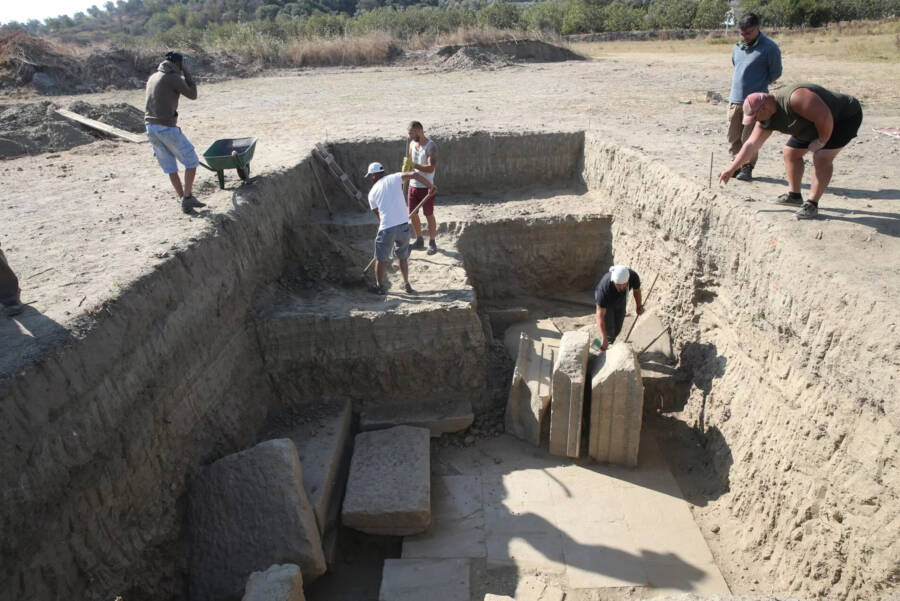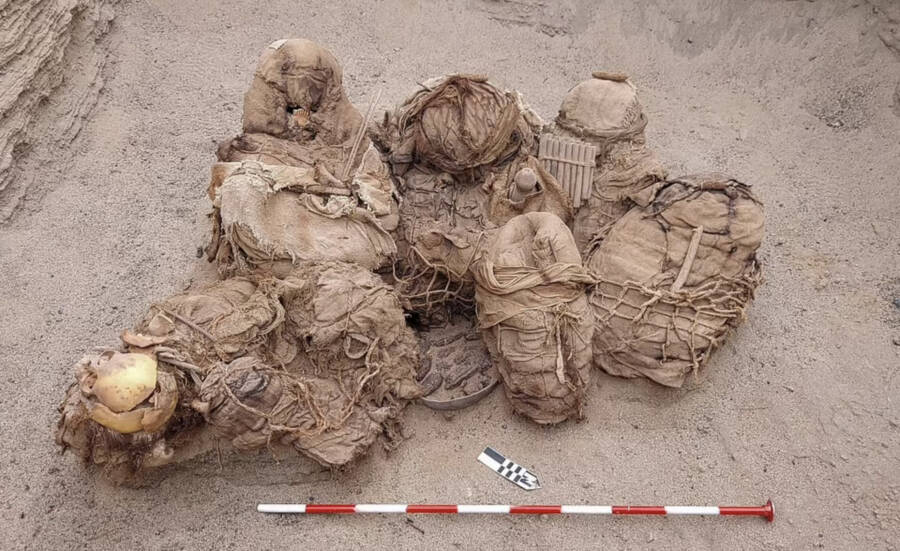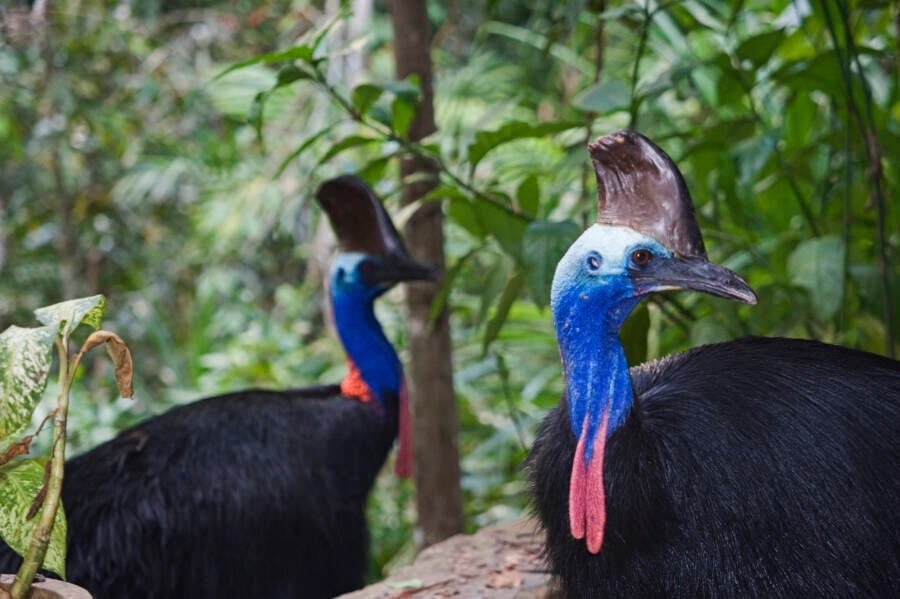The unearthed gate to an ancient Greek Temple of Zeus, an 800-year-old mass grave in Peru, and early humans' attempts to domesticate the world's most dangerous bird.
Archaeologists Just Unearthed The Gateway To The Temple Of Zeus In The Ancient City Of Magnesia

Hurriyet Daily NewsThough it’s estimated to take years, archaeologists now hope to uncover almost all of the entire temple — then rebuild it as it once was in the third century B.C.
Though they’ve been at it for 25 years, archaeologists in western Turkey are still far from uncovering the ancient city of Magnesia’s Temple of Zeus. But they’ve just now taken an incredible step forward by finding the temple’s storied gateway.
In the third century B.C., the entrance’s grand pillars would have stood 16 feet high, helping to make this one of the most impressive houses of worship of its time. See more from the site of this amazing find here.
Peruvian Pipeline Workers Unearth 800-Year-Old Mass Grave Containing Remains Of Eight People

CaliddaThis new discovery is just one of 300 archaeological finds that the Calidda natural gas company has made in the last 16 years.
While working on pipelines near the Peruvian capital of Lima, the natural gas company Calidda recently unearthed eight sets of ancient human remains. This 800-year-old mass grave contains the bodies of both adults and children as well as a wealth of funerary artifacts.
Alongside the bodies, researchers found everything from food remains to an assortment of flutes and other musical instruments. Wrapped in brown cloth and threaded rope made from plants, the dead were also laid to rest with numerous plates, shells, and other offerings presumably for use in the afterlife.
Dig deeper in this report.
Study Suggests Early Humans Raised The ‘World’s Most Dangerous Bird’ 18,000 Years Ago

Education Images/Universal Images Group via Getty ImageCassowaries have been compared to dinosaurs.
The colorful cassowary is grumpy, standoffish, and frequently aggressive. It even has four-inch, razor-sharp talons that can slice through human flesh. But a new study suggests that long before people started rearing chickens, they tried domesticating cassowaries.
The study, published in Proceedings of the National Academy of Science, argues that early humans collected and hatched cassowary eggs as long as 18,000 years ago in Papua New Guinea.
Read on here.





